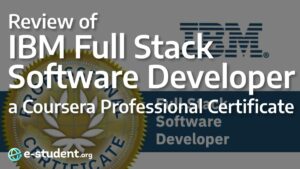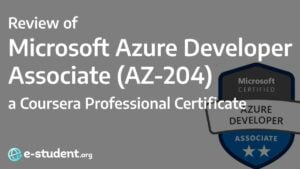Have you ever experienced reading a text or an article again and again and still can’t understand its meaning? This is a problem faced by many – and an especially familiar issue for students. The problem might be that you are not reading actively.
Active reading happens when a person is proactively involved in reading a text, whether it’s a story, article, or course literature. It is an essential skill for every individual, whether you are a student, professional, or lifelong learner, offering a structured and efficient way to engage with the text and enhance one’s comprehension. Mastering one or more active reading techniques can significantly impact your learning experience, whether you’re conducting research, preparing for a test, or simply trying to broaden your knowledge.
Table of contents
Benefits of active reading
Active reading can benefit individuals by enhancing comprehension, information retention, and critical thinking skills by helping them engage with the material properly and effectively. Active reading encourages readers to ask questions, make connections, and summarize key points while engaging with the content. It can also help enhance communication skills, in particular by being able to articulate ideas and thoughts more clearly.
Furthermore, active reading not only makes the act of reading enjoyable but also keeps readers focused and interested in the material as they actively participate in the process. As such, it can foster a habit of lifelong learning by teaching individuals how to seek out new information, explore diverse topics, and continue their personal growth journey.
Methods for active reading
When practicing active reading, you don’t just quickly scan the text that you need to read. It encourages you to engage with the material proactively. Its main idea is to change the act of reading into a dynamic process that involves various steps. The specific steps vary between the different methods for active reading but will usually include an overview or surveying stage, a note-taking stage, a reflection stage, and a reviewing stage.
Here are some of the best methods for active reading:
The THIEVES Method: Extracting key points

To ensure active reading, it’s essential to evaluate the material before engaging with it. One effective approach for “previewing” the material and extracting the core messages is the THIEVES method. The name is an acronym, which stands for Title, Heading, Introduction, Every first sentence, Visual/Vocabulary, End of the text, and Summary – this serves as a checklist for the different aspects of the text that you should look at to try to gather the main points that the text is aiming to communicate.
Advantages:
- Particularly strong for improving reading comprehension
- Helps build vocabulary and understanding of new words
- Very easy method to apply
- Suitable for students of all ages
- Helpful tool for teachers to monitor students’ comprehension
Disadvantages:
- Can be time consuming depending on the text
- Can be difficult to identify the most important information for unfamiliar subjects
- Less suitable for certain types of text, including narrative text
The SQ3R Method: Focus on what's important

One of the older methods, the SQ3R method, was introduced in 1946 but is still relevant today. The method provides you with a method to try to zero in on what is the most important aspect of a text through five steps: Survey, Question, Read, Recite, and Review. You start by quickly skimming through the text to check what it’s all about. Then, importantly, you should formulate questions about the content based on what you picked up during your quick skimming. Only following this should you read the text – actively engaging with it to answer the questions you formulated in the previous step. After this, recite the points you got and recall them from memory. If you can, you may summarize them in your own words. Once you’re done, you may read the entire text and review your notes and summaries. This approach allows you to self-assess your understanding of the material and focus in on the core points.
Advantages:
- Shown to improve the retention of information
- Strengthens organizational skills, association, and critical thinking
- Forces students to use the brain’s information-processing systems more actively
Disadvantages:
- Time-intensive as it requires you to dedicate enough time to comprehend each chapter and analyze all headings
- Can be a difficult method to learn and apply
- The method has a relatively big focus on detailed reading of texts, which is considered an inefficient method for many purposes
The PQ4R Method: Reflecting on texts

A further development of the SQ3R method, the PQ4R method was developed to further strengthen comprehension when reading. PQ4R stands for Preview, Question, Read, Reflect, Recite, and Review. As you’ll notice, apart from having a different label for the first step, the main difference from SQ3R is the addition of a reflection stage.
Like for SQ3R, start by quickly previewing the material before formulating questions on what you want to learn from the text. After actively reading the text to search for the answers to the questions. you should take a brief pause to reflect on what you’ve learned and how the information connects to your prior knowledge. Following that, you may summarize the ideas you’ve noted and rephrase them in your own words. After that you’re back to the same steps as in SQ3R – recite the answers and then review your notes, summaries, and questions.
The PQ4R has similar advantages and disadvantages as the SQ3R method, but the following can be highlighted.
Advantages:
- Helps strengthen comprehension with the focus on reflection
Disadvantages
- Even more complicated and time-consuming to use the than the SQ3R method
The REAP Method: A more straightforward way for active reading

A considerably simpler method, the REAP method has four distinctive steps: Read, Encode, Annotate, and Ponder. In this method, you start straight away with reading the text. Following this, “encode” the main ideas identified in the text in your own words. Then, write “annotations” of the ideas, quotes, etc., in the text. This will help you condense the information, engage with the material, and locate essential information quickly. Lastly, in the pondering stage, pause and reflect on the things you read and encoded. Think how these fit into the vast context of the text and also prepare for any questions that may arise.
Advantages:
- A scientifically proven effective method for improving reading comprehension and recall
- A more straightforward method than SQ3R and PQ4R
- Helps build capacity to engage critically with texts
- Provides a framework for re-engaging with a text from multiple vantage points
Disadvantages:
- Going straight into the reading stage can be problematic and lead to students getting stuck
Conclusion
Active reading is a highly valuable skill. Once mastered, it enables you to understand and comprehend various texts and materials, whether they are short stories or lengthy articles. By following the steps and techniques mentioned above, you can practice and enhance your reading engagement, which proves to be highly beneficial



